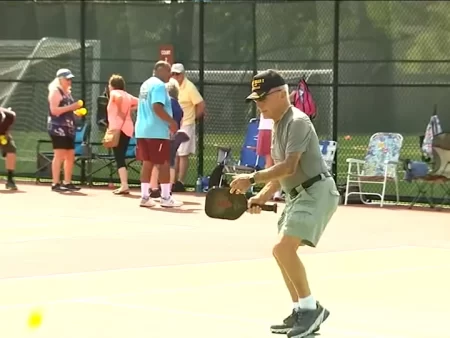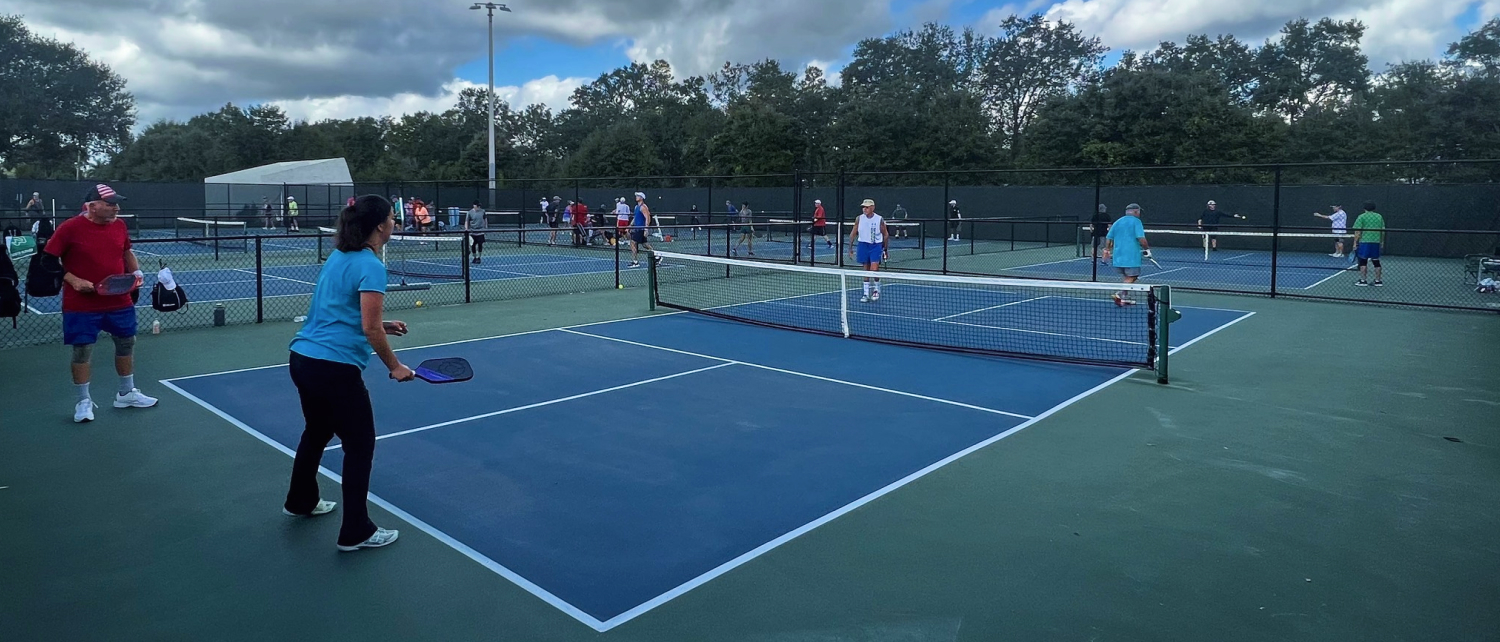Your cart is currently empty!

Bone density, often referred to as bone mineral density (BMD), is a measure of the amount of minerals, primarily calcium and phosphorous, contained in a certain volume of bone. It’s an indicator of bone strength and its resistance to fractures. As individuals age, particularly after the age of 30, bone density tends to decrease. This decline accelerates for women after menopause. Lower bone density increases the risk of fractures, which can lead to mobility issues, chronic pain, and other health complications. Maintaining or improving bone density is crucial for overall health and to prevent osteoporosis and related conditions.
Engaging in regular physical activity is one of the most effective ways to combat the natural decline in bone density. Here’s where pickleball comes into play:
- Weight-Bearing Exercise: Pickleball involves weight-bearing movements such as running, jumping, and pivoting. These actions force the bones to work against gravity, stimulating bone-forming cells and promoting bone growth. Weight-bearing exercises are crucial because they challenge our skeletal system, prompting it to strengthen. Activities like hiking, jogging, and even dancing can also be beneficial.
- Muscle Strengthening: The sport engages various muscle groups, especially in the legs, arms, and core. As muscles pull and push against bones during play, they strengthen the bones, potentially increasing their density. Resistance training, using weights or resistance bands, can further enhance muscle mass, which in turn supports and protects the skeletal system.
- Improved Balance and Coordination: Regular play enhances balance and coordination, reducing the risk of falls. This is crucial for bone health, as falls can lead to fractures, especially in individuals with compromised bone density. Balance exercises, like tai chi or yoga, can be incorporated into one’s routine to further improve stability and reduce the risk of falls.
- Stimulation of Bone Remodeling: The repetitive impact from activities in pickleball can stimulate bone remodeling, a natural process where old bone tissue is replaced with new. This process is vital for maintaining bone strength. Consuming a diet rich in calcium and vitamin D can support this remodeling process, ensuring that the body has the necessary nutrients to build strong bones.
- Increased Calcium Intake: Engaging in sports often makes individuals more health-conscious. Players might be more inclined to consume calcium-rich foods and supplements, indirectly benefiting bone density. Dairy products, green leafy vegetables, and fortified foods are excellent sources of calcium. Additionally, vitamin D, which aids in calcium absorption, can be obtained from sunlight exposure and certain foods like fatty fish.
Beyond these five strategies, there are additional measures one can take to support bone health:
- Limiting Alcohol and Caffeine: Excessive consumption of alcohol and caffeine can interfere with the body’s ability to absorb calcium, leading to weaker bones. Moderation is key.
- Quit Smoking: Smoking is detrimental to bone health. It reduces blood flow to the bones, decreases the amount of calcium absorbed from the diet, and lowers the production of bone-forming cells.
- Regular Health Check-ups: Regular check-ups can help monitor bone density levels. If there’s a significant decline, doctors can recommend treatments or medications to slow down bone loss.
- Stay Hydrated: Drinking adequate water supports all bodily functions, including those that promote bone health. Dehydration can lead to reduced shock absorption in the joints, increasing the risk of fractures.
- Manage Stress: Chronic stress can lead to bone loss due to the prolonged release of the stress hormone cortisol. Engaging in relaxation techniques, meditation, or hobbies can help manage and reduce stress.
In conclusion, while pickleball offers a fun and engaging way to support and improve bone health, it’s just one piece of the puzzle. A holistic approach, combining exercise, a balanced diet, and a healthy lifestyle, is the best strategy for maintaining and enhancing bone density as we age.
For those keen on diving deeper into the world of pickleball and understanding its myriad benefits, including its impact on bone health, I&G Pickleball is an invaluable resource. This platform offers a wealth of knowledge, from gameplay strategies to health benefits, ensuring players are well-informed and equipped to make the most of the sport. By combining the insights from I&G Pickleball with the aforementioned strategies for bone health, players can not only enhance their game but also ensure they’re taking comprehensive steps toward a healthier future. Whether you’re a novice or a seasoned player, I&G Pickleball is your go-to guide for all things pickleball.



